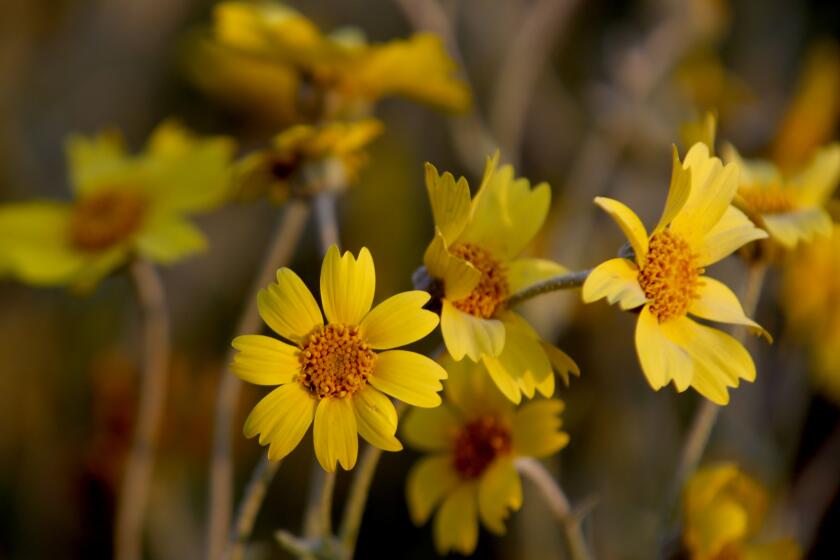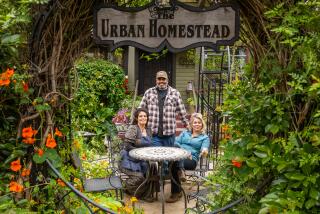How to make compost and maybe save the world too
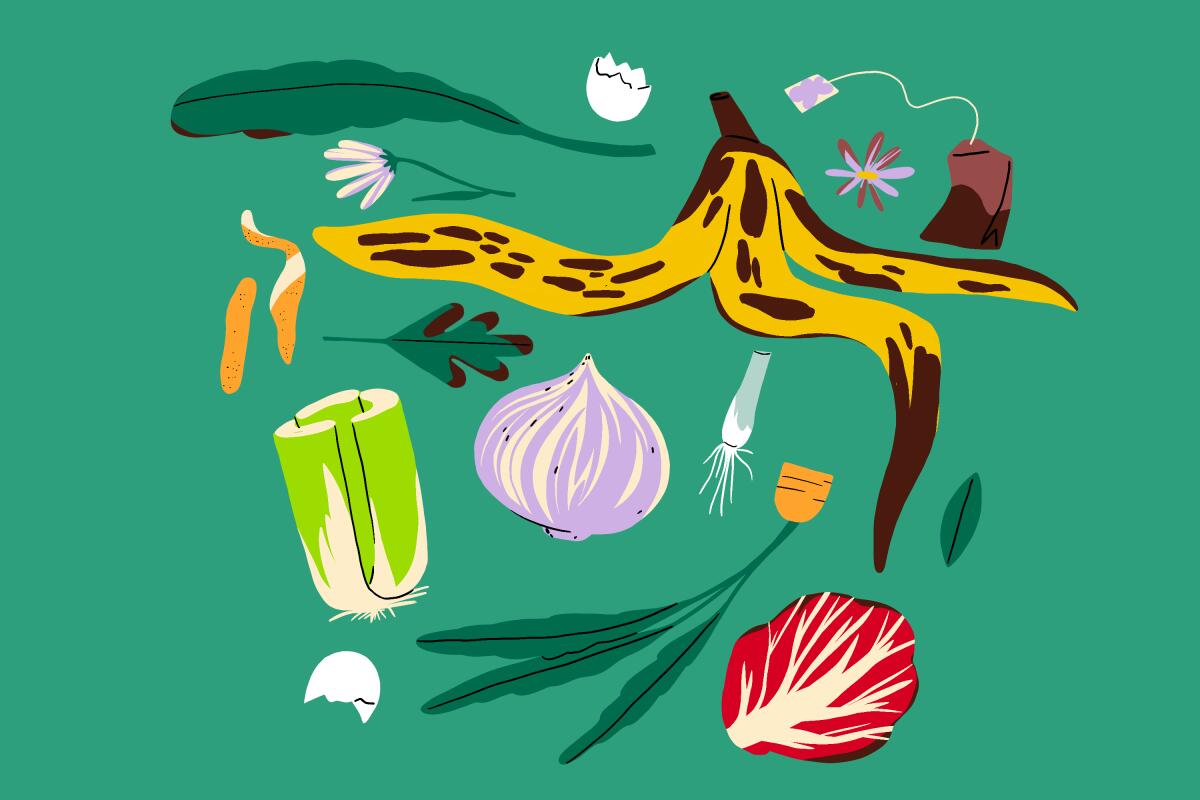
- Share via
There’s nothing mysterious about making compost. It’s just a mixture of stuff we usually toss — banana peels, coffee grounds, eggshells, shredded newspaper, fallen leaves, grass clippings ... and that bag of forgotten spinach that started dissolving in the fridge.
The magic is what this motley mix becomes after just two or three months: a brown, crumbly, sweet-smelling amendment that not only builds and enriches your soil but helps it retain water while nourishing the beneficial microbes all good soil requires. We’re talking pure garden gold rescued from the landfill, and all you have to do is keep it balanced, replenished and moist.
In fact, once you start composting, it tends to change your world view, says Michael Martinez, founder and executive director of L.A. Compost. “When you see things as having value that you once thought were worthless, it starts to apply to anything we see as ‘waste’ — even people,” he said. “It’s a way to change our disposable culture.”
latimes.com/plants: The only gardening resource you’ll ever need >>>
Martinez started L.A. Compost in 2013, picking up food waste on a bicycle to create community composting piles. Today L.A. Compost oversees 35 composting hubs, where people with no room for compost piles can leave their kitchen scraps and yard trimmings instead of sending them to the landfill.
One hub is at the John C. Fremont Wellness Center & Community Garden, next to Fremont High School in South L.A., where students take classes learning how to make compost and tend the small orchard and raised beds of vegetables on land managed by the Los Angeles Neighborhood Land Trust. Martinez, land trust gardens and youth program manager Megan Laird and compost manager Jonathan Galindez offer these tips for creating your own compost piles at home:
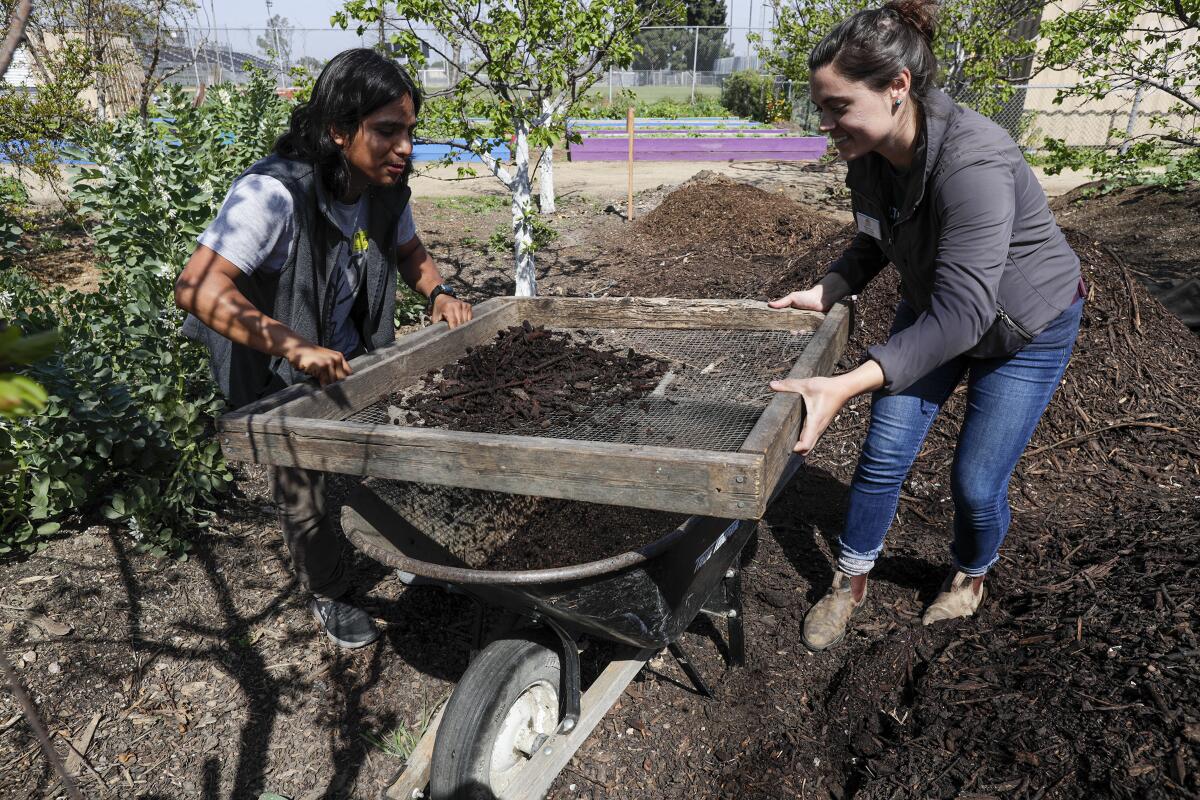
1. Get your tools
You’ll need a sturdy garden fork (pitchfork) to turn your pile and some kind of container with a lid to hold your kitchen scraps. (A 5-gallon size is ideal, Martinez said.) Some containers are handsome enough to sit on a counter and hold a day or two’s worth of trimmings. A garden screen is helpful to separate finished compost from large items that need more time to break down.
Griffith Park and the Santa Monica Mountains are close-to-home destinations. Farther afield, try Antelope Valley or the Carrizo Plain.
2. Choose your spot
Start your compost pile on soil and find a somewhat shady, airy spot, Galindez and Martinez said, since direct sun in Southern California can dry out the ingredients that need to stay moist to effectively break down.
3. Choose a bin
Most municipalities offer classes and deeply discounted composting bins for residents. Los Angeles County Public Works, for instance, sells compost bins for $40, and the L.A. Sanitation provides them for $20 at its free composting classes. Your bin should be well ventilated so water can drain and the organisms get enough oxygen to do their work. If you have the money and space, get two bins, so you start building a new pile while the full bin “cooks.”
Thirsty? Lack of light? Need to get rid of gnats? Here are the answers to the most frequently asked questions about houseplants.
The optimum bin size is a cubic yard, (3 feet tall by 3 feet wide by 3 feet deep), but other sizes work too, Martinez said. Just realize they may not “cook” or as quickly.
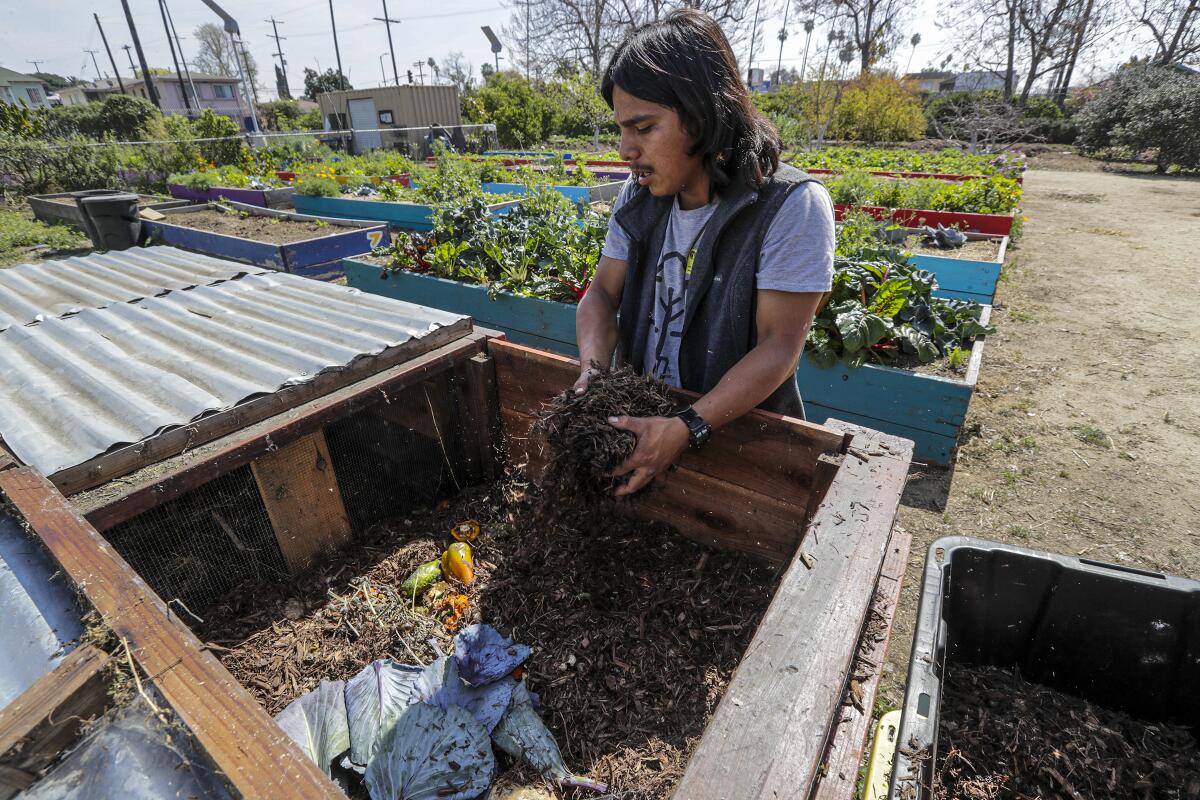
4. Add ingredients
You’ll need roughly equal parts of “green” (high in nitrogen) and “brown” (high in carbon) materials, along with water, to get things cooking. You want the materials to be damp like a wrung-out sponge, never dripping.
Green materials include fruit and vegetable trimmings, grass and yard clippings, coffee grounds and filters, and manure from non-meat-eating animals, such as a chicken, steer or horse. (Old stable bedding is particularly good.) Brown materials include dry leaves, pine needles, straw, wood chips, shredded newspaper, paper towels and napkins. Cut up big materials to help them break down more quickly.
5. Stir
Mix grass clippings thoroughly with the other ingredients so they don’t clump.
Ten months ago, Tommy Engström quit his job in ad sales, packed up his Chicago apartment and drove to Los Angeles.
6. Water
Add water to this mix until it’s damp — not soggy — and turn it with your garden fork to introduce lots of air into the pile because the microorganisms that break down the materials need oxygen to thrive. Turn your pile at least once a week and keep it not too wet or too dry. If it starts smelling bad, that’s an indication your pile needs turning and more browns, Martinez said. And if it’s too dry, it likely needs more greens.
7. Stir some more
The more you turn, the faster your pile will cook. Well-turned compost is ready in about three months, said Martinez. (For more details, we’re impressed by these easy-to-follow guides at LA Compost, L.A. Sanitation and Riverside County Department of Waste Resources.
8. Things to avoid
Keep meats, fats, dairy products and oils out of your compost pile. They attract rats, flies and other pests and tend to putrefy rather than break down, causing nasty smells, according to the Riverside County guide. No dog and cat poop either, since the feces of animals that eat meat contain pathogens that won’t break down and could live on in your soil. The same goes for trimmings from diseased plants; the disease could survive the composting process and infect other plants in your garden.
More to Read
Sign up for The Wild
We’ll help you find the best places to hike, bike and run, as well as the perfect silent spots for meditation and yoga.
You may occasionally receive promotional content from the Los Angeles Times.
